I have written several series of posts about art hiding in plain sight as well as things that have gone missing in Boston. Sometimes, an artwork moves from one category to the other and back again. Statues, in particular, can shift from place to place in Boston, going missing for a while and then popping up again in a different location.
One such item would have belonged to the Art Hiding in Plain Sight series when I first saw it in the 1960s. “Boston Tapestry,” a cast-iron screen embedded with bits of colored glass, was installed in the brand-new Prudential Center’s lobby. Here is a photo of the original installation, with the sculpture resting on the floor.
Studying at Northeastern University at the time, I often visited what were then open-air shops in the Prudential Arcade. Visitors got a good view of the sculpture when coming up the escalator from the Pru Garage. The colored-glass “jewels” embedded in the cast iron caught the afternoon light.
A Case of Missing Memory
At the time. I was taking a geology course and our professor had consulted on planning for the Prudential Center. He told us the stone panels on the lobby walls were partially metamorphosed limestone. The tiles probably had a better marketing name but I enjoyed both knowing about the stone and looking at “Boston Tapestry” whenever I was in the lobby.
I wondered what had happened to it in the new Prudential Center Mall. For many years, however, I didn’t remember what it was called, much less who had created it. That made research a little difficult. A week ago, I picked up a book called “A Guide to Public Art in Greater Boston” by Marty Carlock at a library book sale. Even this revised edition was published in 1993, a time when many of the artworks were still in their original locations.
“Boston Tapestry” — Basic Information
Flipping through the book, I found “Boston Tapestry.” Wowza. Now I had information to work from. Here is the basic information, as it appears in “A Guide to Public Art in Greater Boston.”
BOSTON TAPESTRY 1962
Material: Cast iron and colored glass
Dimensions: 20’ high by 60’ wide
Weight: Five tons
Location: South lobby of the Prudential Building
Sculptor: Alfred Duca (1920 – 1997)
Alfred M. Duca: Sculptor and Innovator
Alfred M. Duca was a native of Milton, MA, and a long-time resident of Annisquam on Cape Ann. He trained at the Pratt Institute and the Boston Museum School. He also served as a visiting lecturer at several of the area’s universities.
An innovator as well as an artist, Mr. Duca developed several new technical processes, including Polymer Tempera Paint in 1944. This was the forerunner of the acrylic paint used by artists today.
He created “Boston Tapestry” using a method called sand casting. When MIT invited him to experiment with new casting methods, he innovated yet again to simplify the sand-casting process. As Ms. Carlock describes it:
“Sand casting, a traditional means of reproducing forms in metal, ordinarily requires a master object made in some other material, such as plaster, clay or wood. The master is packed into a mold filled with hardened foundry sand. The object is then removed and molten metal is poured into the negative hollows, reproducing the original faithfully.
“For this work, Mr. Duca omitted what appears to be the essential step: the original object. Working in an ordinary industrial foundry in Waltham…he pioneered an innovative method from full-scale drawings. He carved negatives directly into the sand-packed molds. The pouring then produced an object that had not existed before.”
The Glass Jewel Heist
Working in the unfinished Prudential Center’s lobby, he cast the glass “jewels” and installed them directly into the sculpture. I loved those shining pops of color amid the dark cast iron, especially when they glowed in sunlight. Alas, others loved the glass as well—but too much. Over time, vandals pried out and stole many of them, leaving behind holes and blank spaces. I guess we should be glad they didn’t show up with blowtorches and try to cut the sculpture into pieces.
For “Boston Tapestry’s” 83 panels, Mr. Duca created shapes that are both organic and geometric. I found them endlessly fascinating, evocative of other worlds and strange buildings, almost calligraphic in places.
The Sculpture’s Theme is Boston
Mr. Duca chose Boston as the sculpture’s theme and he created an interwoven abstract pattern of its people, history, topography, and presence. Mr. Duca said the screen evoked, “…the multiplicity of Boston, its historic three hills, the vitality of its people, the boldness of their lives, their culture and artifacts.” He wove wings, sand, and waves into the rolling iron patterns .
If you could look closely, you might discern Boston’s people, its ships, and its spires, its hills, its trees, its symbols, ethnic and religious. This would take some scrutiny, though, given the sculpture’s abstract patterns.
Where Is “Boston Tapestry” Now?
The Prudential Company had considered removing “Boston Tapestry” when they renovated the lobby in the nineties. The city’s residents, unhappy with that decision, rose up in protest. Prudential decided to renovate the sculpture instead and that’s when it went missing for a while. On the sculpture’s return, the company mounted it in the same location but high on a wall where sticky-fingered jewel thieves couldn’t reach it.
They removed “Boston Tapestry” again in 2007 in conjunction with another renovation that also stripped out the partially metamorphosed limestone tiles. This time, however, it disappeared for good. According to BPX, the building’s owner and manager, the sculpture has been stored in their art archives.
Missing But Not Lost
That means “Boston Tapestry” has not gone missing, in the way the Gardner Museum’s paintings vanished. But it has been hidden away like the Bank of America’s four N.C. Wyeth murals. We know where they are but no one in Boston can see them.
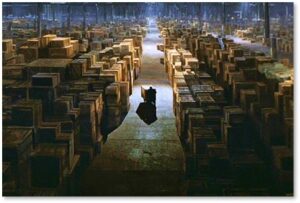 This outcome brings to mind the last scene in Raiders of the Lost Ark, when Indiana Jones looks out onto the floor of an enormous warehouse piled with huge crates. He sees a workman pushing the crate carrying the Ark to where it will be stored among the other crates.
This outcome brings to mind the last scene in Raiders of the Lost Ark, when Indiana Jones looks out onto the floor of an enormous warehouse piled with huge crates. He sees a workman pushing the crate carrying the Ark to where it will be stored among the other crates.
When Indy protests, a government functionary reassures him the Ark will be examined by “Men. Top men.” But we know that it will just gather dust along with whatever amazing items occupy those thousands of crates.
BPX has the right to do whatever they want with the artwork they own. I find it sad, however, that a sculpture depicting Boston’s history and topography can no longer be seen by anyone in Boston. With it gone, we have lost another small piece of what makes the city special.
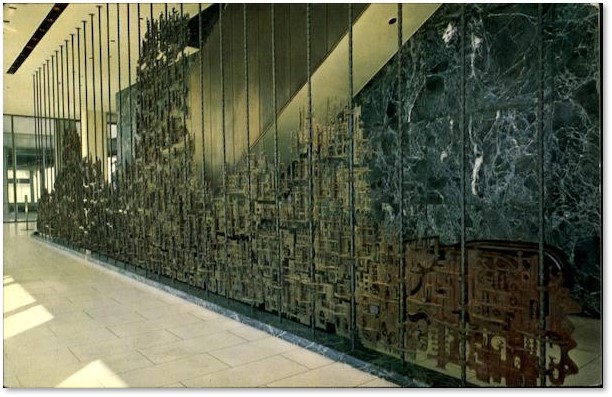
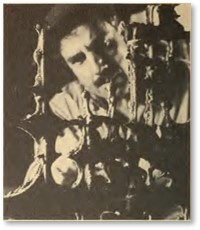
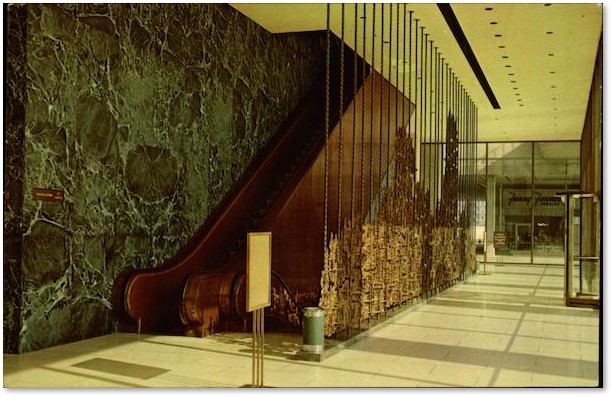
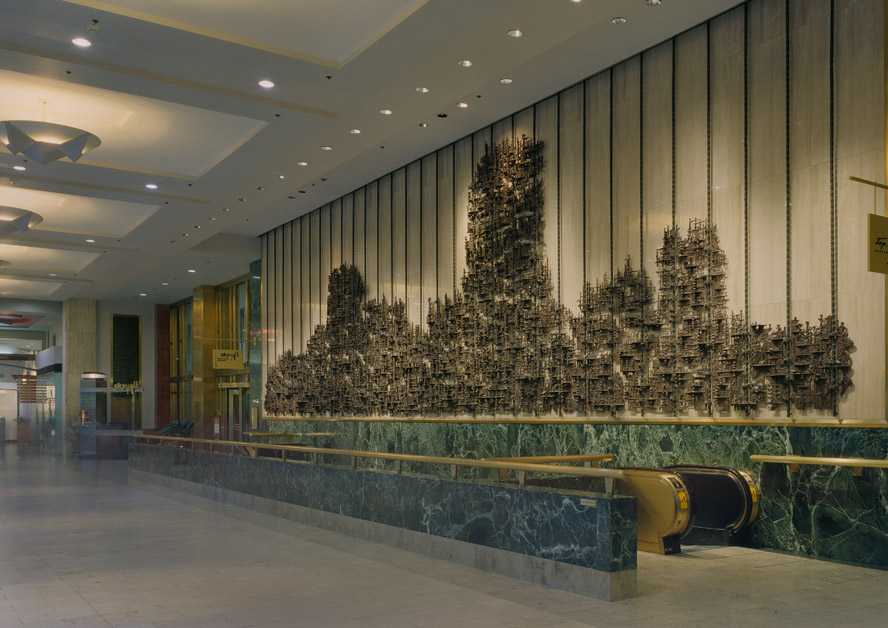

I didn’t know that you’d solved the disappearance; nice work! Note, though, that you inadvertently repeated a quote from Duca.